Are you wondering, “When are carrots ready for harvest?” If so, you’ve come to the right place. In this guide, we’ll explore everything you need to know about the carrot harvesting process, from recognizing the signs of readiness to the best harvesting techniques. Whether you’re a gardening newbie or a seasoned pro, this guide will help you maximize your carrot harvest and enjoy the freshest, most flavorful carrots possible.
Introduction
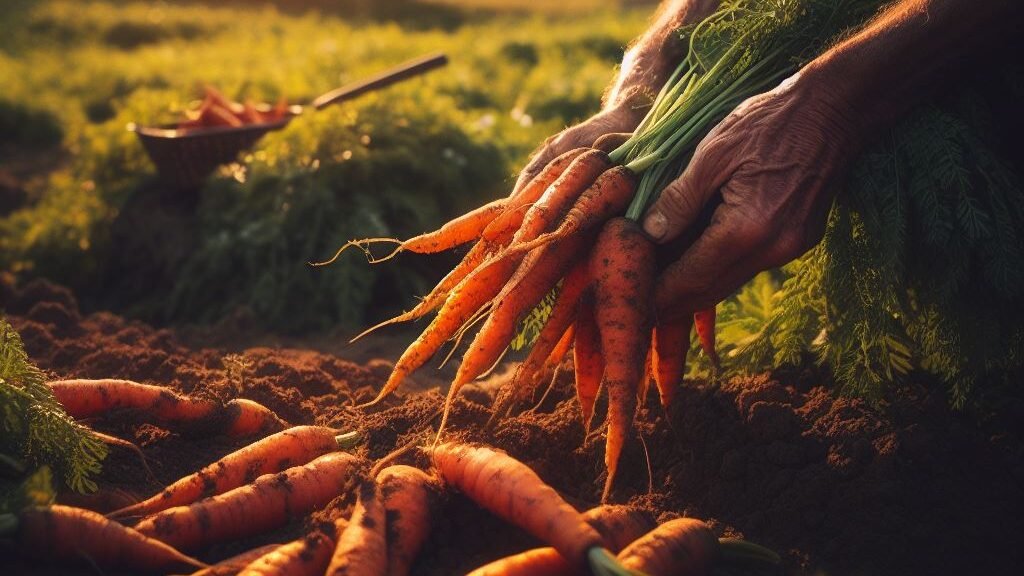
Carrots, a versatile root vegetable beloved by many, are a staple in gardens around the world. But knowing precisely when to harvest them can be a bit tricky. Harvest too soon, and you miss out on the maximum flavor and nutritional value. Leave them in the ground too long, and they might become woody and lose their sweet, earthy taste. Hence, understanding the signs of when carrots are ready for harvest is crucial.
This guide will elaborate on those telltale signs that your carrots have reached their peak and are ready to be enjoyed from your garden to your table.
Carrot Varieties and Their Harvesting Times
Carrots come in a myriad of varieties, each with unique attributes and harvesting times. Here’s a brief overview:
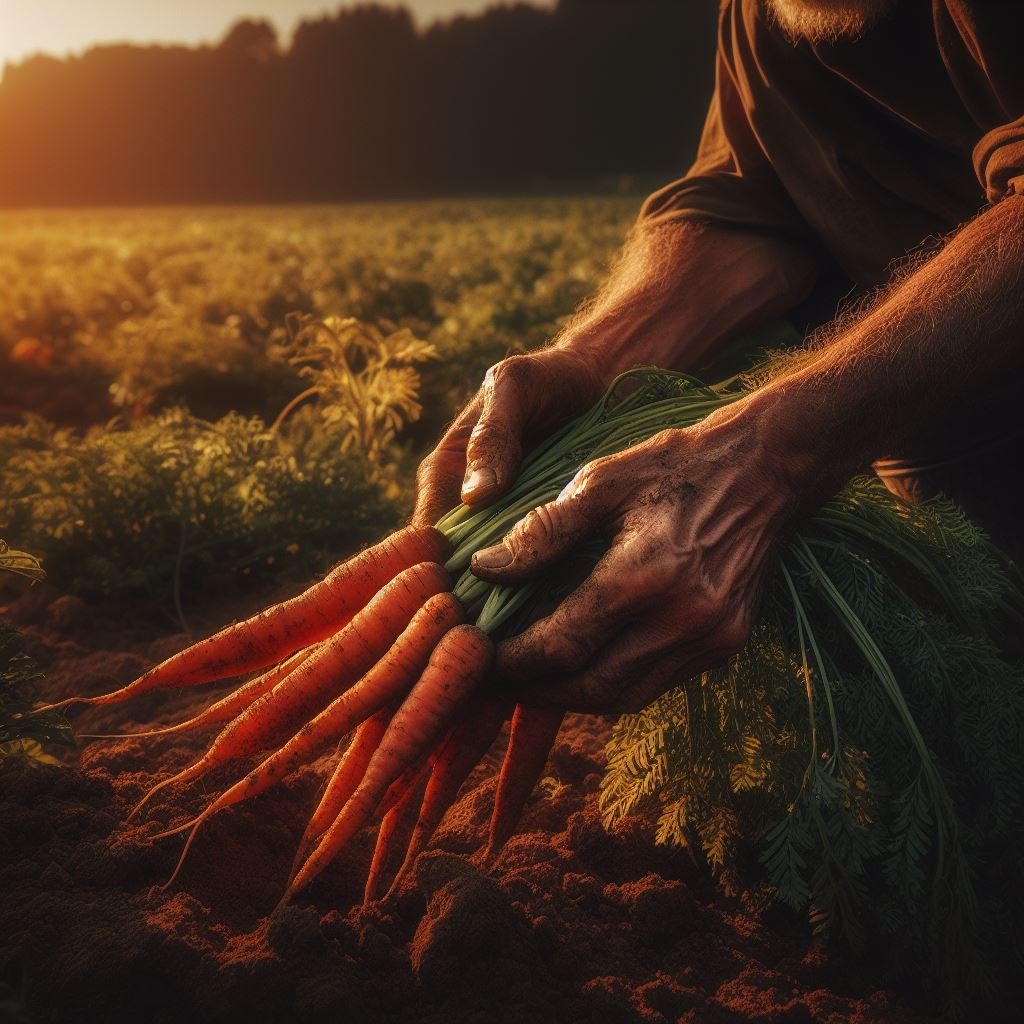
- Nantes: These carrots are nearly cylindrical and are known for their sweet, crisp texture. They usually mature in about 50-60 days.
- Imperator: These are long, slender carrots with a tapering end, known for their rich flavor and crunchy texture. They typically mature in 70-80 days.
- Danvers: These carrots are shorter and thicker and are especially well-suited for heavy soil. They are harvested in about 75 days.
- Chantenay: These carrots are short and stout, great for growing in shallow or rocky soil. They mature in approximately 70 days.
- Miniature/Baby carrots: These can be harvested earlier than other types, often in just 30-60 days, depending on the specific variety.
Remember, these are just estimated harvesting times. The actual readiness of your carrots will depend on various factors, including the specific growing conditions in your garden. The best way to determine when your carrots are ready for harvest is to understand the signs of mature carrots, which we will explore in the next section.
When Are Carrots Ready for Harvest?
Identifying when a carrot is ready for harvest can be a little tricky, as the bulk of the growth happens under the soil. But fear not, some telltale signs can help you determine if your carrots have reached their peak.
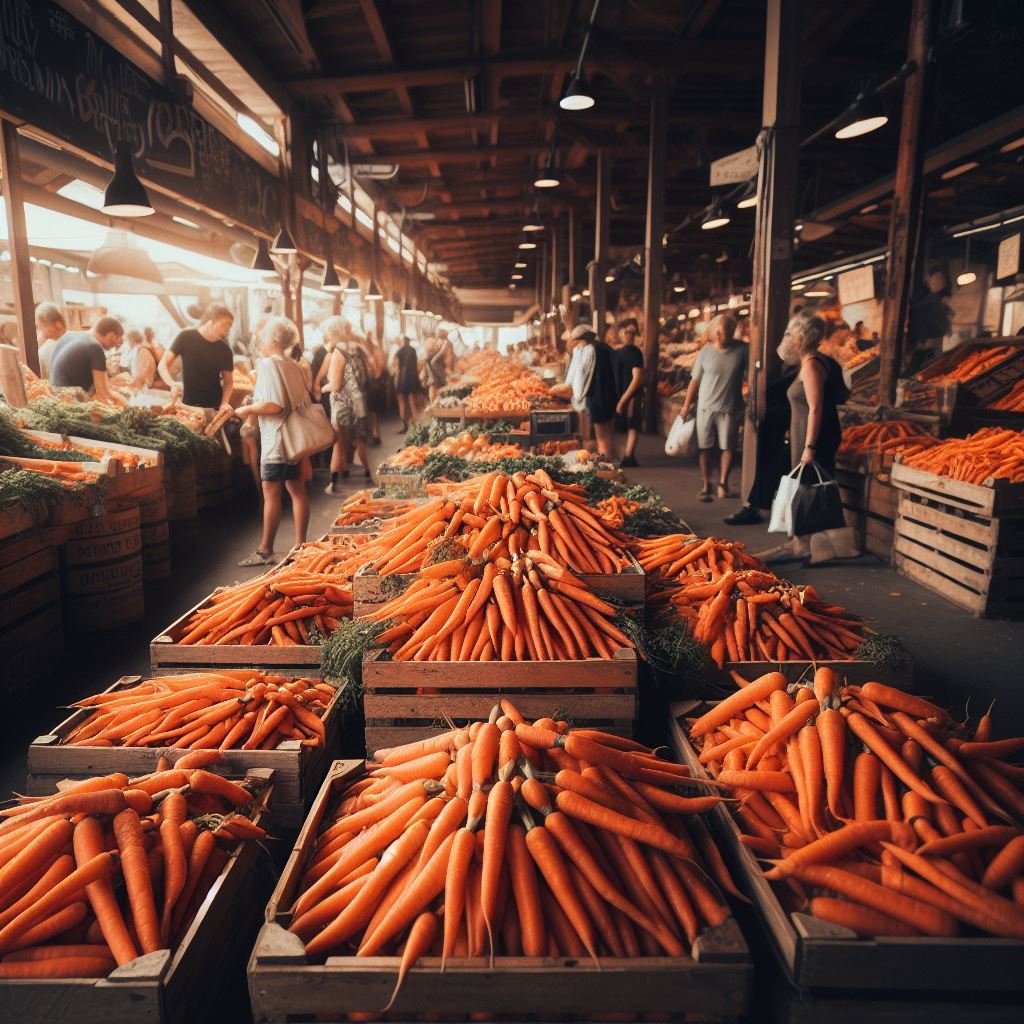
- Carrot Shoulder Exposure: One of the most reliable signs that a carrot is ready for harvest is the emergence of its ‘shoulder’ – the top part of the carrot – at the soil surface. When you see this, it usually indicates that the carrot has reached a harvestable size.
- Leafy Top Growth: The foliage of your carrot plant can also give you a hint about the harvest time. A fully matured carrot typically has a lush, vibrant green top. If the leaves are turning yellow or brown, it may indicate that the carrot is over-matured or stressed.
- Checking the Size: The size of the carrot can also indicate its maturity. A simple method is to gently brush away the soil around the top of the carrot to check its width. Most carrot varieties are ready to harvest when they are about 1 inch in diameter at the shoulder. Keep in mind, however, that size can vary depending on the variety.
- Tasting Test: Another effective method for checking carrot maturity is the tasting test. You can simply pull out a carrot, wash it, and give it a taste. If the carrot has a full, sweet flavor, it is likely ready for harvest. If it’s bitter or lacks flavor, it may need a bit more time.
Remember, it’s better to harvest a little early than too late. Over-matured carrots can become woody and less flavorful. By understanding these signs and checking your garden regularly, you can ensure you’re harvesting your carrots at just the right time for the best taste and nutritional value.
Harvesting Techniques for Carrots
Harvesting carrots requires a gentle touch to avoid damaging the vegetable. Here are some effective methods to ensure a successful harvest without causing harm to your carrots:
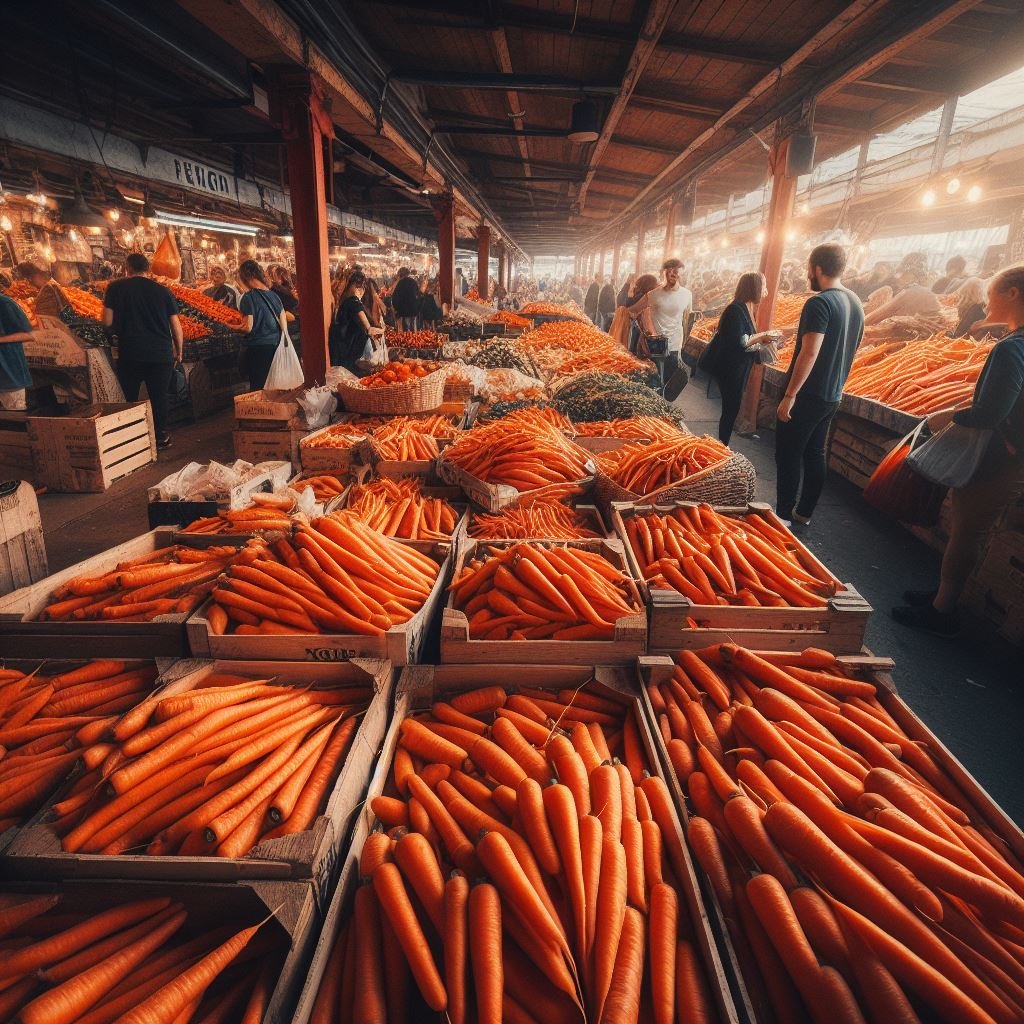
- Watering before Harvest: One of the easiest ways to ease your harvest is to water the soil around the carrots thoroughly the night before you plan to harvest. This helps to soften the soil, ensuring a smoother and easier extraction of the carrots.
- Loosening the Soil: Use a garden fork or a similar tool to gently loosen the soil surrounding the carrots. Be careful not to go too deep as you might accidentally pierce the carrots.
- Pulling Out Carrots: Grasp the carrot tops near the root and gently wiggle it while pulling upward. If the soil has been adequately loosened and watered, your carrot should slide out of the ground with minimal effort.
- Leveraging Tools: For stubborn carrots, a notched trowel or a hori-hori can be useful. Insert the tool into the soil a few inches away from the carrot, then gently lever the carrot out of the ground.
- Remove Soil and Excess Foliage: After removing the carrots from the ground, shake off any excess soil and remove the green tops. This helps to preserve the carrot’s freshness.
Remember, harvesting carrots should be a gentle process. If you rush or use excessive force, you risk damaging the vegetable, potentially affecting its storage life and taste. Patience and care are key when it comes to harvesting carrots.
Storing and Using Your Harvested Carrots
Proper storage of your freshly harvested carrots can significantly extend their freshness and nutritional values. Here are some tips to store your carrots effectively:
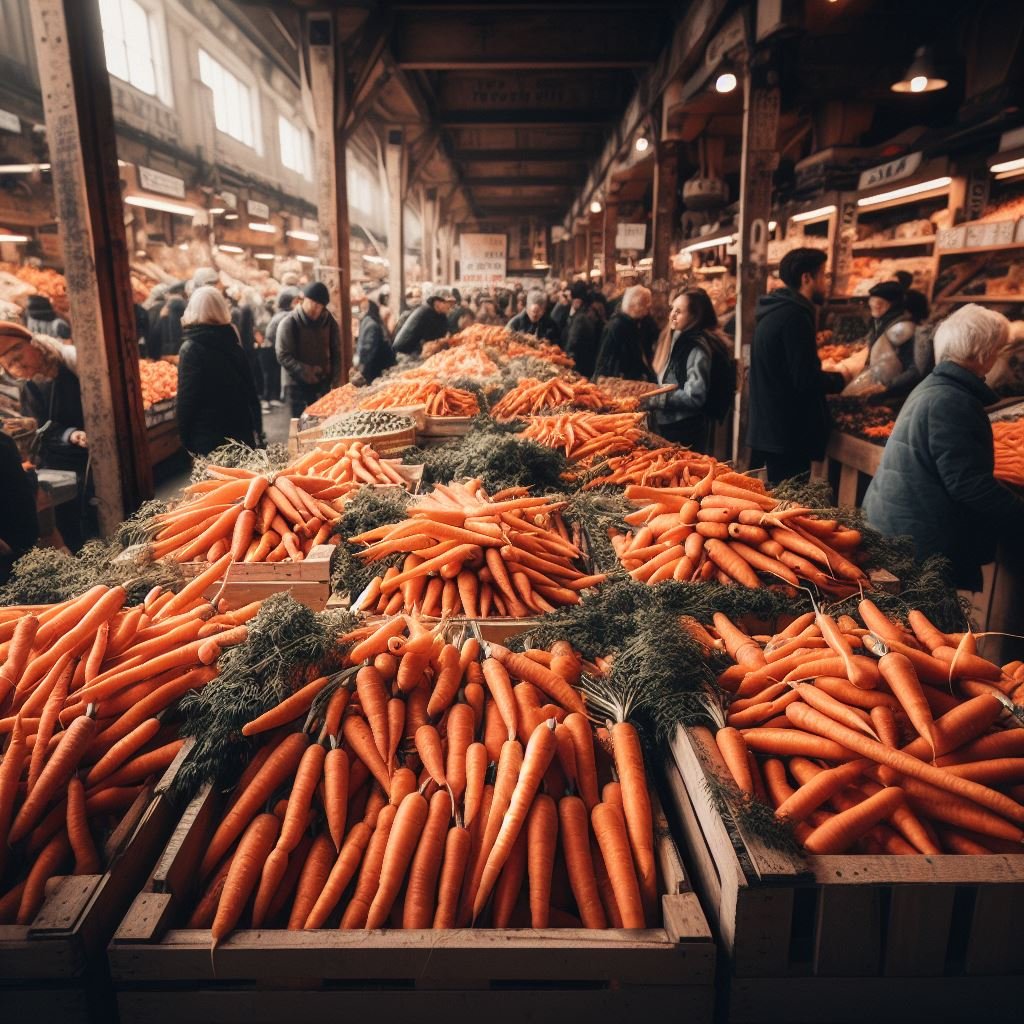
- Refrigeration: After harvesting, remove the green tops, wash the carrots thoroughly, let them dry completely, and then store them in the vegetable drawer of your refrigerator. This can keep your carrots fresh for several weeks.
- Storing in Sand or Peat Moss: For longer storage, consider storing your carrots in a cool, humid place layered in damp sand or peat moss. This method can keep them fresh for several months.
- Freezing: You can also freeze your carrots for longer storage. First, blanch them in boiling water for a few minutes, then quickly cool them in ice water, dry them, and store them in airtight bags in the freezer.
Freshly harvested carrots can be used in a variety of meals to add both flavor and nutrition.
- Salads: Grate or thinly slice the carrots and add them to your salads for a sweet, crunchy texture.
- Soups and Stews: Carrots add a rich flavor to soups and stews and can be used as a base for many recipes.
- Roasted Carrots: Toss whole or sliced carrots in a little olive oil, add your favorite herbs and spices, and roast them in the oven for a delicious side dish.
- Carrot Juice: If you have a juicer, consider making fresh carrot juice, which is packed with nutrients and a great way to start the day.
Remember, homegrown carrots have a sweet, earthy flavor that is far superior to store-bought versions, so be sure to make the most of your harvest!
Common Mistakes in Carrot Harvesting

- Harvesting Too Early or Too Late: One of the most common mistakes is harvesting carrots either too early or too late. Early harvest means the carrots are undersized and lack flavor, while late harvest leads to overgrown and woody carrots. Understanding the right signs of maturity is essential for optimal harvest.
- Not Watering Before Harvest: Failing to water the soil around the carrots before harvest can make the extraction process difficult and cause damage to the carrots. Ensure that you water the soil thoroughly before you plan to harvest.
- Rough Handling: Being too rough while pulling out the carrots can damage them, affecting their storage life and taste. Always remember to gently wiggle the carrot while pulling it out.
- Neglecting to Test the Soil: Not checking the condition of the soil is another common mistake. Heavy, clay-laden soil is not ideal for growing carrots as it can lead to misshapen or stunted growth.
- Leaving Green Tops on Stored Carrots: Leaving the green tops on carrots during storage can reduce their freshness as the tops draw moisture away from the root. Always remove the tops before storing them.
By being mindful of these mistakes, you can ensure a successful and rewarding carrot harvest.
Summary
| Carrot Type | Days to Maturity | Readiness Criteria |
|---|---|---|
| Nantes | 60-70 | Tops should have a diameter of about 3/4 inch to 1 inch. |
| Imperator | 75-80 | Ready when tops reach a diameter of 1/2 inch or larger. |
| Danvers | 75-80 | Look for shoulders protruding from the soil and bright orange color. |
| Chantenay | 70-80 | Assess readiness by examining tops with a diameter of about 1 to 1.5 inches. |
| Miniature/Baby Carrots | 50-60 | Harvest when they reach a length of approximately 2 to 3 inches. |
Conclusion
Harvesting carrots at the right time is essential to enjoy their full flavor and nutritional benefits. By understanding the signs of maturity, properly preparing the soil around your carrots, and employing gentle harvesting techniques, you can ensure a successful, rewarding harvest. Moreover, proper storage methods can significantly extend the freshness and nutritional value of your carrots, allowing you to enjoy the fruits of your labor for many weeks or even months.
Avoiding common mistakes, such as rough handling or harvesting too early or too late, can also enhance the quality and taste of your carrots. Remember, homegrown carrots offer a unique, sweet, earthy flavor that is far superior to store-bought versions, making the entire process of growing, harvesting, and storing your carrots immensely satisfying and worthwhile.
Frequently Asked Questions
When Are Carrots Ready for Harvest?
Carrots are ready to harvest when they are of suitable size, typically 1/2 to 3/4 inches in diameter at the top (widest part). The top of the carrot will also often push above the soil line when ready.
How Do I Know If I’ve Harvested My Carrots Too Early or Too Late?
Carrots harvested too early will be undersized and may lack full flavor. If they’re harvested too late, they’re likely to be overgrown, tough, and woody.
Does Watering Before Harvesting Make a Difference?
Yes, watering the soil before harvesting can make the extraction process easier and prevent damage to the carrots.
How Should I Store My Harvested Carrots?
After removing green tops and washing them thoroughly, you can store carrots in the refrigerator, layered in damp sand or peat moss, or freeze them for longer storage.
What Can I Use My Harvested Carrots For?
Freshly harvested carrots can be used in a variety of dishes such as salads, soups, stews, or even simply roasted. They can also be juiced for a nutrient-rich drink.





